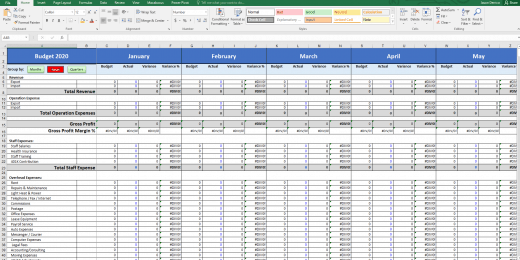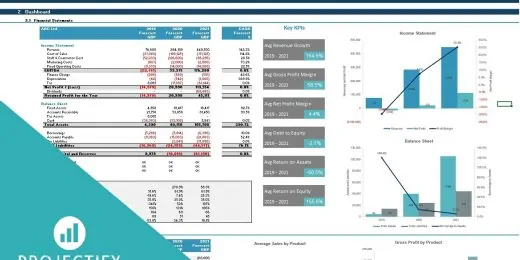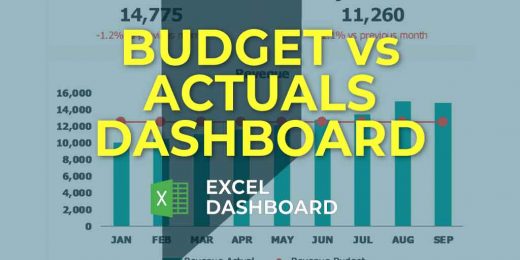How to Streamline Your Processes With Cash Burn Ratio Formula

To streamline processes with the cash burn ratio formula, first understand it measures the rate at which a company uses up its cash reserves. Businesses use this metric to plan and extend their financial runway.
In the ever-competitive business landscape, maintaining financial health is paramount. The cash burn ratio serves as a pivotal tool for startups and established companies alike, providing insights into the sustainability of their operational strategies. It enables businesses to make informed decisions, ensuring that they optimize their spending and enhance overall efficiency.
With a clear grasp of their cash burn, companies can adjust their course, prioritizing investments, and cutting unnecessary expenses. This acute financial analysis is critical for staying afloat in today’s market, where understanding and managing cash flow can be the difference between growth and stagnation. Calculating the cash burn ratio allows entrepreneurs and financial managers to maintain control over their finances, securing their company’s future in a systematic and strategic manner.
Introduction To Cash Burn Ratio
The Cash Burn Ratio is a key metric for every startup and established business. It shows how fast a company uses its cash reserves before generating a positive cash flow. Understanding this concept is crucial for financial stability and long-term success.
Capturing The Essentials Of Cash Burn
Cash burn refers to the rate at which a company spends its cash reserves. It’s the speedometer of the company’s financial vehicle, displaying how fast you are heading towards a refill or a stall. Companies track monthly expenses against revenues to calculate the burn rate. If revenues are low, the burn rate takes center stage in financial planning.
- Monthly Expenses: Total of all costs in a month.
- Revenues: Income from sales before expenses.
- Burn Rate: How quickly cash is being spent.
The Relevance Of The Cash Burn Ratio In Business
The Cash Burn Ratio is not just another number on the books. It is a vital sign of your business’s health. A high burn rate may indicate the need for additional funding or a review of your spending habits. On the other hand, a low burn rate could mean your company is sustainable or even ready for growth.
| High Burn Rate | Low Burn Rate |
|---|---|
| Possibility of needing more funds | Indication of sustainability |
| Review of financial strategies | Potential for business growth |
Start-ups should monitor their Cash Burn Ratio closely. It helps in navigating the treacherous waters of early business phases. For established enterprises, it is a benchmark for efficiency and planning. Keep the ratio low for stability or adjust it for strategic investments.
Determining Your Starting Point
Determining your starting point is the first step in streamlining processes with the Cash Burn Ratio formula. Before you apply the formula, you need to understand where your company stands financially. A clear snapshot of your current cash reserves and operational expenses will set the ground for an effective cash burn analysis.
Calculating Current Cash Reserves
To measure your business’ financial health, start by calculating how much cash is available. This includes all bank balances and liquid assets. This figure is your lifeline, as it shows how long you can keep operating before raising more funds.
| Account | Balance |
|---|---|
| Checking Account | $25,000 |
| Savings Account | $55,000 |
| Emergency Fund | $10,000 |
Add all your balances. This total is your current cash reserve. Try to maintain this number to ensure you can cover upcoming costs.
Understanding Your Operational Expenses
Operational expenses are the daily costs to run your business. These expenses can include salaries, rent, and utilities. By tracking these costs, you’ll know exactly how much you spend each month.
- Rent: Monthly lease payments
- Salaries: Employee wages and benefits
- Utilities: Water, electricity, and internet services
- Software Subscriptions: Tools and applications used
Subtract your monthly expenses from your cash reserves to predict how long your company can operate without additional income. Aim to reduce expenses to extend this period.
Breaking Down The Cash Burn Ratio Formula
Understanding the cash burn ratio formula is crucial for any business aiming to streamline its processes. The formula provides insight into how long your company can operate before it needs additional funding. Let’s break down this essential formula, allowing you to measure and manage your cash flow effectively.
The Components Of The Formula
The cash burn ratio is a simple yet powerful tool. It consists of two main components:
- Cash Burn: Total cash spent over a specific period.
- Cash on Hand: The amount of cash available at the beginning of that period.
These elements work together to give you a clear financial picture.
Step-by-step Calculation Method
Calculating your cash burn ratio is straightforward with these steps:
- Determine the period you want to analyze.
- Total the expenses during that period to find your cash burn.
- Assess your cash reserves at the start of the period.
- Finally, divide the cash burn by cash on hand to get the ratio.
| Step | Action | Example |
|---|---|---|
| 1 | Choose a period | January to June |
| 2 | Calculate total expenses | $50,000 |
| 3 | Find cash on hand | $100,000 |
| 4 | Divide expenses by cash | 0.5 ratio |
Use this method to keep your financial health in check and ensure sustainability.
Interpreting Your Cash Burn Ratio
Understanding your Cash Burn Ratio is crucial for streamlining your business processes. It tells you how fast your company is spending its cash reserves before generating positive cash flow from operations. Let’s dive into what your ratio indicates about your financial health and how it compares with industry standards.
What Does Your Ratio Indicate?
A low Cash Burn Ratio signals efficient use of available funds. Businesses aim for a higher ratio to prolong their runway. Key insights include:
- Financial sustainability: A strong ratio means your company can sustain operations longer.
- Investment opportunities: A healthy ratio attracts investors looking for stability.
- Growth potential: Manageable burn rates point to a company’s potential for scaling up.
Interpret your ratio carefully. It forms a crucial part in making informed strategic decisions.
Comparing Ratios: Industry Benchmarks
Every industry has different standards for what constitutes a healthy Cash Burn Ratio. Comparing your ratio to your industry’s benchmarks helps gauge your company’s performance. It highlights:
- The competitiveness of your operations.
- How lean your business runs compared to peers.
- Possible financial adjustments for improvement.
| Industry | Healthy Cash Burn Ratio | Warning Zone |
|---|---|---|
| Tech Startups | 12-18 months | Less than 6 months |
| Retail | 6-12 months | Less than 3 months |
| Manufacturing | 6-12 months | Less than 3 months |
Study your industry benchmarks for a clear picture. Your ratio tells you more than just numbers; it shapes strategic pivot and survival capabilities. Stay aware, stay agile.
Streamlining Processes To Improve Your Ratio
Understanding the cash burn ratio is crucial for businesses, especially startups. It tells you how fast your company is using up its cash reserves before generating positive cash flow from operations. A lower burn rate means a longer runway to make your business profitable. Streamlining processes can significantly improve this ratio. Let’s dive into how to identify inefficiencies and implement cost reduction strategies to optimize your cash burn ratio.
Identifying Inefficiencies
Finding areas where your business could be operating more smoothly is the first step. Start by mapping out all your processes. Look for steps that cause delays. Ask your team for feedback. Use tools for tracking work and time. This will pinpoint exactly where you lose time and money. Next, tackle these problem areas with targeted improvements.
Cost Reduction Strategies
Once you know where the inefficiencies lie, it’s time to cut costs. Smart cost reduction drives your cash burn ratio down. Consider automating repetitive tasks. Renegotiate with suppliers. Outsource non-core activities. Implement remote work to save on office space. Reduce unnecessary tool subscriptions. Use this straightforward approach for a leaner, more efficient business operation:
- Automate: Apply software solutions where possible.
- Rethink Vendor Contracts: Always look for the best deal.
- Outsource: Let experts handle specialized tasks.
- Go Remote: Cut down on office expenses.
- Trim Subscriptions: Only pay for tools you need.
By applying these strategies, your business can see a marked improvement in financial health. Remember, a lower cash burn ratio buys you time. That time allows for strategy refinement and growth. So, start streamlining today for a better tomorrow!
Technology’s Role In Managing Cash Flow
Modern businesses thrive on smart financial management. Understanding the cash burn ratio helps companies avoid pitfalls by managing resources well. This is where technology shines, simplifying financial tracking and cash flow analysis. Harnessing the right tech tools can turn a complex spreadsheet ordeal into a click-of-the-button ease.
Financial Software Solutions
Many software solutions are tailor-made to assist with financial management. They offer dashboards and reports that clarify your cash position. You can see your cash burn ratio with real-time data, making proactive decisions to improve financial health.
Features of top financial software include:
- Real-time reporting
- Forecasting tools
- Budget management
- Profit and loss analysis
- Secure data encryption
Automating Expense Tracking
Tracking expenses can be tedious. Automation changes this narrative. With expense tracking tools, receipts and invoices feed directly into the system. The result? A precise view of your outgoing cash, which bolsters your cash burn ratio analysis.
The benefits of automating expense tracking include:
- Time savings
- Accuracy in records
- Easier expense categorization
- Streamlined approvals
The Impact Of Revenue Growth On Cash Burn
When a business understands the cash burn ratio formula, it sees how crucial revenue growth is. More revenue often means a lower burn rate. This promotes efficiency. Let’s discover how boosting income can help offset expenses and drive sustainable growth strategies.
Boosting Income To Offset Expenses
Increasing sales is a clear path towards better financial health. With more money coming in, companies can cover costs without draining resources. They can invest in new opportunities too. Here are some ways businesses are doing this:
- Diversifying products or services
- Optimizing pricing strategies
- Enhancing customer experiences to encourage repeat business
- Seeking out new markets or audiences
Sustainable Growth Strategies
To grow sustainably, smart planning is key. Companies must balance short-term needs with long-term goals. They need a formula. That’s where the cash burn ratio comes into play. Below are steps for implementing growth strategies:
- Analyze current revenue streams
- Identify areas of improvement or expansion
- Invest in areas that promise long-term returns
- Monitor performance and adjust as needed
Focusing on solid unit economics is essential. It ensures that revenue growth tracks with expenses. The result is a healthier burn rate and a more solid business foundation.
Planning For The Future With Cash Burn Insights
Planning for the future is vital for every business. Understanding the cash burn ratio can guide financial decisions. This metric measures the rate at which a company uses up its cash reserves before reaching profitability. It is crucial for startups and scaling businesses. By diving into cash burn insights, businesses can streamline processes, ensuring efficiency and longevity.
Forecasting Cash Flow Needs
Knowing your cash burn ratio allows for precise cash flow forecasting. It’s the art of predicting how much money a business will need to keep running.
- Identify monthly expenses: This is the starting point for forecasting.
- Estimate income: Look at past trends and future projections.
- Calculate net burn: Subtract the income from expenses.
- Review regularly: Make this a monthly habit for accuracy.
By accurately forecasting cash flow needs, a business can plan purchases and investments without the danger of running out of cash.
Mitigating Risks With Better Planning
Better planning equals fewer risks. With the cash burn ratio as a guide, a company can mitigate financial risks significantly.
- Establish safety nets: Aim to have a cash reserve to cover unexpected costs.
- Create budget adjustments: Reduce costs where possible to extend runway.
- Seek funding proactively: Don’t wait until the last minute to find investors.
- Monitor the market: Stay updated on industry trends for smarter decisions.
By preparing for future cash needs and potential risks, businesses can stay in control of their finances and ensure steady growth.
Best Practices For Continuous Improvement
When aiming for continuous improvement in business operations, understanding the cash burn ratio formula is key. It’s not just about knowing your current financial status, but also applying best practices to improve and refine your processes over time.
Regular Review Of Financial Metrics
Keeping a keen eye on your financial health is essential for streamlining your business.
-
Monthly Financial Check-ups:
Ensure you conduct monthly reviews of key financial metrics, including your cash burn rate. -
Real-Time Data:
Use dashboards that provide real-time data so you can react quickly to any financial red flags. -
Actionable Reports:
Generate reports that offer insights, not just numbers, to guide your financial decisions.
These regular audits help identify trends, reduce costs, and implement strategic changes.
Creating A Culture Of Fiscal Responsibility
To ensure sustainable growth, establishing a culture that prioritizes financial accountability is critical.
-
Training and Awareness:
Educate your team on the importance of the cash burn ratio and its impact on the business. -
Financial Discipline:
Set clear budgetary guidelines and encourage team members to propose cost-saving strategies. -
Encourage Ownership:
Allow teams to contribute to financial planning and own their budgeting processes.
Such a culture not only optimizes cash flow but also inspires innovation in cost management.
Case Studies
Understanding the cash burn ratio is crucial for business health. Many companies share their stories on how they optimized it to succeed. Others learned hard lessons after falling into cash burn pitfalls.
Success Stories Of Cash Burn Ratio Optimization
Learning from successful companies can guide our own process improvements. These stories highlight how focusing on the cash burn ratio can lead to better financial health and stronger strategic decision-making.
| Company | Sector | Strategy | Outcome |
|---|---|---|---|
| TechStart Inc. | Tech | Cost-cutting in non-core areas | Extended runway by 6 months |
| EcoGoods | Retail | Inventory management improvement | Reduced burn rate by 20% |
| MediTech Solutions | Healthcare | Focused investment in high-ROI projects | Doubled revenue in 1 year |
- TechStart Inc. reduced operational costs while maintaining product quality.
- EcoGoods fine-tuned inventory levels to avoid overstocking and reduce waste.
- MediTech Solutions invested wisely in projects with proven return on investment.
Lessons Learned From Cash Burn Pitfalls
Mistakes offer valuable lessons. Some companies have faced challenges managing their cash burn rate, providing insights on what to avoid.
- Ignoring the burn rate can lead to unexpected funding crises.
- Overexpansion without solid revenue increases the burn rate too quickly.
- Failure to monitor spending against budgets can lead to unchecked cash outflows.
Startup X expanded too fast without solid revenue, leading to a cash crisis. They cut down costs, recovered financially, and now monitor their burn rate closely.
AppDev Corp lost sight of their spending. A rigorous budget review and cost control resulted in 50% reduction in their monthly burn rate.
Frequently Asked Questions
What Is The Cash Burn Ratio?
The Cash Burn Ratio measures the rate at which a company depletes its cash reserves over a certain period. Calculating it involves dividing the company’s net cash spent on operating expenses by its cash balance. Knowing this ratio helps businesses plan better for sustainability and growth.
How Do You Calculate Cash Burn Ratio?
To calculate the Cash Burn Ratio, identify the cash spent on operations and the cash balance at the beginning of the period. Divide cash spent by cash balance to get the ratio. A higher ratio indicates a faster cash depletion rate, alerting a company to monitor its spending practices.
Why Is Monitoring Cash Burn Ratio Crucial For Startups?
For startups, the Cash Burn Ratio is a critical health metric, indicating how long they can operate before needing additional funding. Keeping an eye on this ratio allows startups to manage their funds effectively, delaying or preventing a potential cash crisis.
Can Cash Burn Ratio Help In Forecasting?
Yes, the Cash Burn Ratio assists in forecasting by providing insights into how soon a company might run out of cash. This helps businesses in planning future funding rounds and operational strategies to maintain liquidity and avoid insolvency.
Conclusion
Streamlining your processes is pivotal for financial health. The cash burn ratio formula is your ally, guiding wise spending decisions. Master this metric, and you’ll navigate start-up turbulence with ease. Embrace this financial compass, and watch your business thrive with sustained efficiency and clarity.



















































